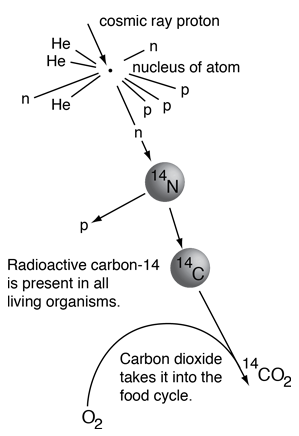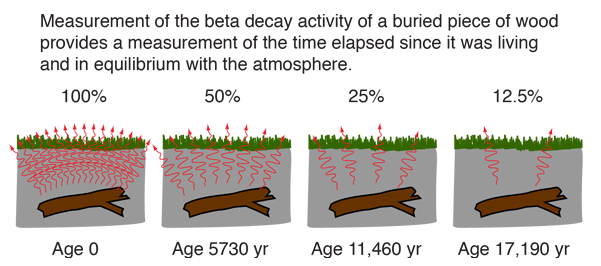Carbon Dating
 |
Carbon dating is a variety of radioactive dating which is applicable only to matter which was once living and presumed to be in equilibrium with the atmosphere, taking in carbon dioxide from the air for photosynthesis. Cosmic ray protons blast nuclei in the upper atmosphere, producing neutrons which in turn bombard nitrogen, the major constituent of the atmosphere . This neutron bombardment produces the radioactive isotope carbon-14. The radioactive carbon-14 combines with oxygen to form carbon dioxide and is incorporated into the cycle of living things. The carbon-14 forms at a rate which appears to be constant, so that by measuring the radioactive emissions from once-living matter and comparing its activity with the equilibrium level of living things, a measurement of the time elapsed can be made. |
| HyperPhysics***** Nuclear | R Nave |


